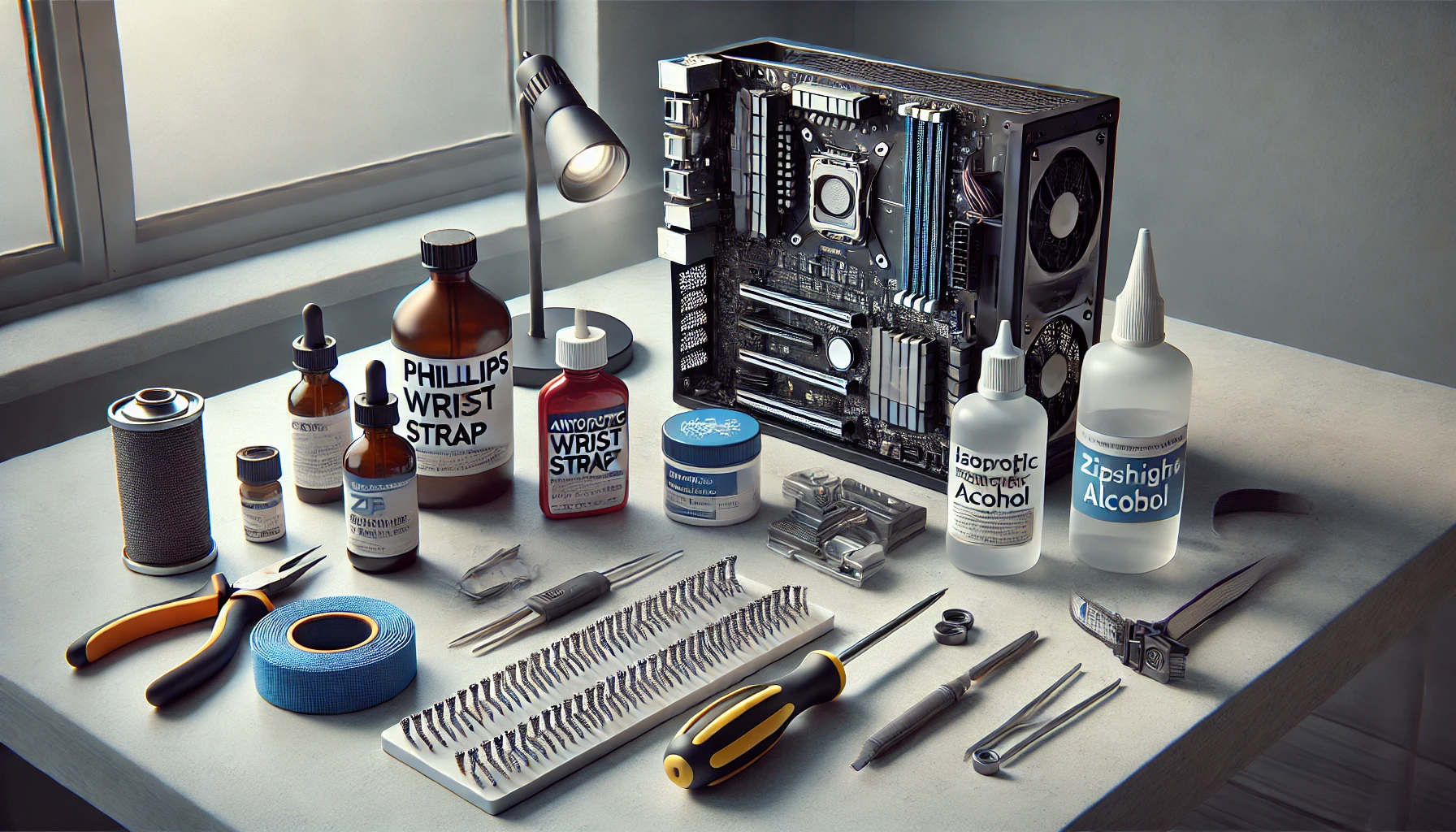Building a PC is an exciting and rewarding experience—but just like any technical task, having the right tools makes all the difference. The good news? You don’t need a full workshop to assemble a computer. In fact, with just a few essential items, you can confidently and safely complete your build at home.
In this guide, we’ll cover all the must-have tools and accessories for PC building in 2025, plus a few optional items that make the process easier and more organized.
Why the Right Tools Matter
- Protect your components from static discharge or accidental damage
- Speed up assembly and make installations easier
- Improve build quality through better cable management and cleaner setup
- Reduce frustration during tricky installations
Whether you’re a first-time builder or a seasoned enthusiast, these tools will help you get the job done right.
1. Phillips Head Screwdrivers
Your number one essential tool.
- Choose a magnetic #2 Phillips screwdriver
- Make sure the shaft is long enough to reach deep into cases
- Magnetized tips make screw handling easier (and safer)
💡 Don’t use electric drills—they can overtighten or strip screws.
2. Anti-Static Wrist Strap (ESD Protection)
Static electricity is one of the biggest risks when handling components.
- Wear a grounded anti-static wrist strap clipped to a grounded surface (like your case)
- Alternatively, touch a metal part of the case regularly to discharge static
💡 Work on a wooden or anti-static mat, not a carpet or blanket.
3. Small Container or Magnetic Tray
Don’t lose screws during your build!
- Use a parts tray or small container to store screws, standoffs, and fasteners
- Magnetic trays are great for keeping everything in one place
💡 Organize screws by type to speed up installation.
4. Zip Ties or Velcro Straps
Cable management is essential for airflow and aesthetics.
- Zip ties are cheap, secure, and easy to use
- Velcro straps are reusable and more flexible
- Use to route cables along case channels or behind the motherboard tray
💡 Don’t overtighten zip ties—they can pinch cables or damage insulation.
5. Thermal Paste (If Not Pre-Applied)
Some CPU coolers come with pre-applied thermal paste, but many do not.
- Use a quality non-conductive thermal paste (e.g., Arctic MX-6, Noctua NT-H2)
- Apply a small pea-sized dot in the center of the CPU
💡 Always clean old thermal paste with isopropyl alcohol (90%+) before reapplying.
6. Isopropyl Alcohol and Lint-Free Cloth
- Use to clean the CPU surface and heatsink base
- Ensure good thermal conductivity when applying new paste
💡 Paper towels can leave residue—use microfiber or coffee filters.
7. Flashlight or Headlamp
Some cases and boards have low lighting—especially when installing small cables.
- A headlamp keeps your hands free while improving visibility
- A clip-on LED light or phone flashlight also works in a pinch
💡 Helps especially with motherboard front-panel connectors.
8. Long-Nose or Needle-Nose Pliers
Great for:
- Removing or placing jumpers
- Retrieving dropped screws
- Routing small cables in tight spots
💡 A small pair of tweezers can also be handy for working in compact cases.
9. Scissors or Wire Cutters
Use for:
- Cutting zip ties
- Trimming sleeving or protective sheathing
- Opening packaging cleanly
💡 Keep a compact pair in your build kit—don’t use your teeth!
10. Optional: Compressed Air or Electric Duster
If you’re working with reused parts, cases, or coolers:
- Use compressed air to blow out dust from fans, filters, and heatsinks
- Electric dusters are eco-friendly and reusable
💡 Hold fan blades in place while cleaning to avoid overspinning them.
11. Optional: Parts Picker Checklist or Software
Use PCPartPicker or your preferred tool to:
- Double-check compatibility before assembling
- Print your build list and keep it nearby
- Track drivers, part numbers, or warranty info
💡 This helps avoid missing parts or misconnecting components.
Optional Extras (That Make Life Easier)
- Rubber grommets for custom cable routing
- Cable combs for sleeved PSU cables
- Magnetic project mat to keep track of steps and parts
- Digital multimeter (for advanced users troubleshooting power issues)
These aren’t required—but they’re helpful, especially for those who build PCs frequently.
Final Thoughts
You don’t need a full toolkit or workshop to build a PC at home—just a few basic, reliable tools. With the essentials covered, you’ll not only make the process smoother but also protect your components and ensure your build looks and performs its best.
As with every build, take your time, stay organized, and double-check your work. Having the right tools by your side will make your PC-building experience much more enjoyable.
